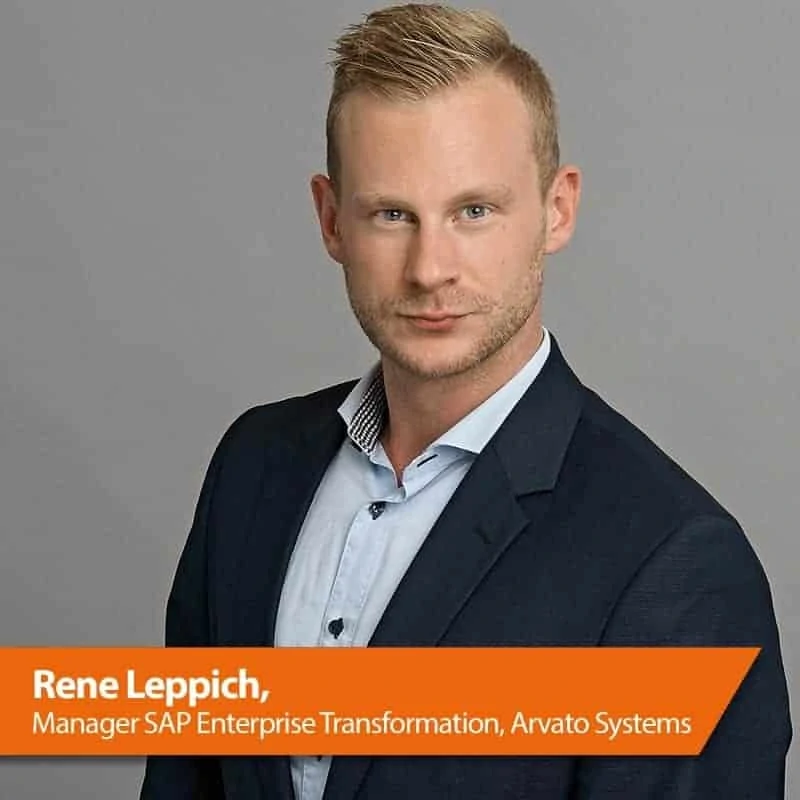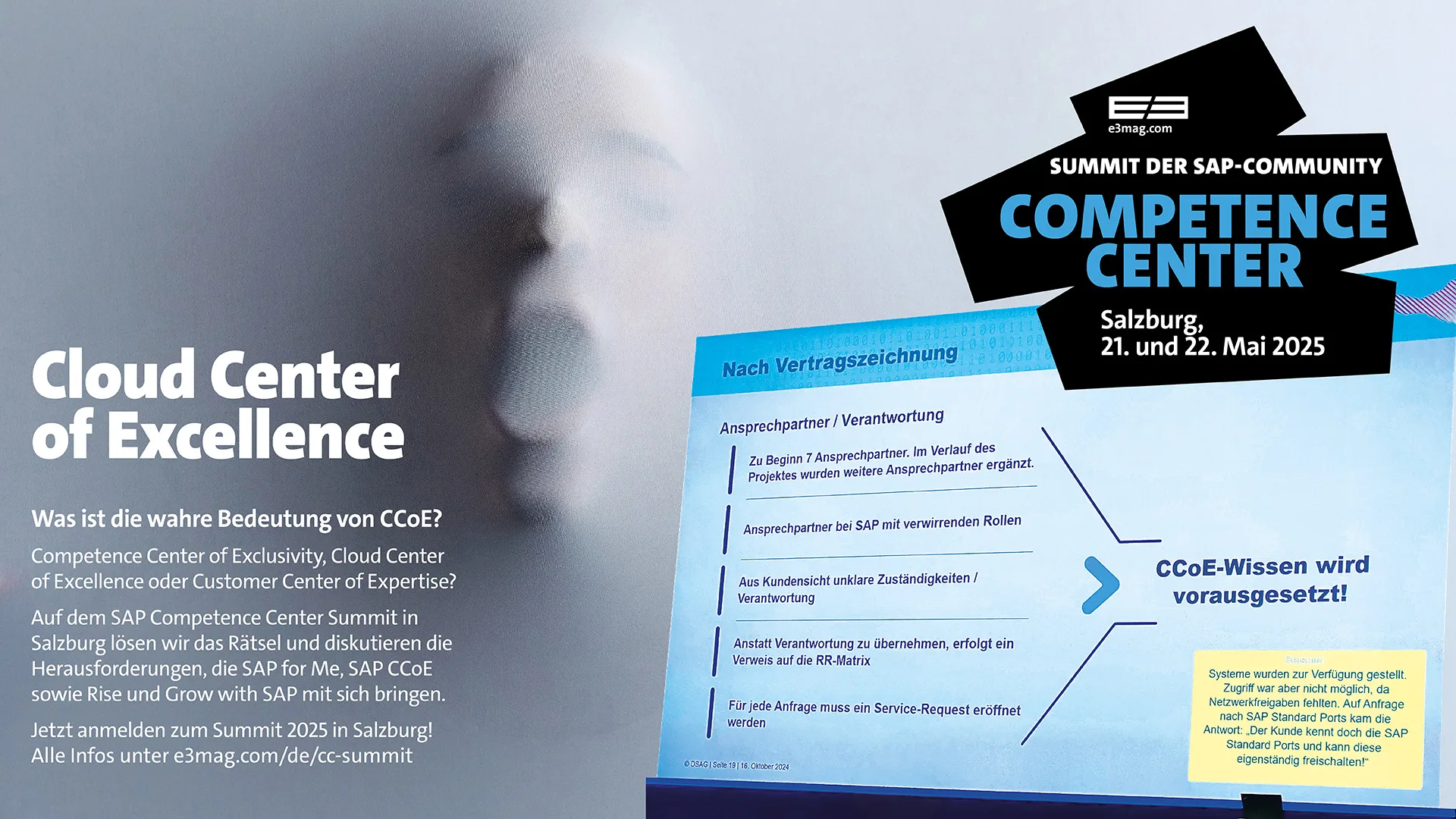The core of the transformation


Large IT projects often find it difficult to meet the expectations of the outcome. There are many reasons for this - the objectives are imprecise, the approach cannot be adequately planned due to long lead times, the stakeholders are insufficiently involved and much more.
German companies are currently facing what is probably the biggest challenge since the beginning of the information age - the digital transformation of their entire business processes.
In addition, companies need to tap into the latest technologies such as artificial intelligence, machine learning, predictive analytics and robotic process automation - without these innovations, the implementation of new, holistic digital business models is inconceivable.
With S/4 Hana, SAP offers a stable core that is supplemented with the SAP cloud platform as an agility layer. This serves as a leading solution within the digital transformation - it ensures integration and access to the latest technologies. This results in a number of benefits, such as reduced maintenance and upgrade costs.
Many companies are therefore currently looking at introducing S/4, according to a study conducted last year by Arvato Systems in collaboration with Pierre Audoin Consultants.
According to the survey, nine percent of the companies surveyed are already implementing S/4, 18 percent are actively planning the introduction and no less than 54 percent are discussing the changeover.
The possible implementation of S/4 should already be coordinated with the company's medium and long-term strategies as part of such a discussion.
This is the only way to determine whether the planned, individual environment is capable of meeting current and future challenges of the digital business world (we addressed this topic in the July/August 2019 issue of E-3, page 53).
Companies must also be aware that the willingness to change within the organization is a key success factor for the effectiveness of the transformation.
Roles and working methods have to adapt to the possibilities of technological progress in order to start and permanently establish the transformation.
When companies enter the concrete planning phase at the latest, the creation of an SAP Business Transformation Roadmap is essential. It translates the requirements from the previously defined guidelines of the corporate strategy into the design of future business processes.
A consulting and system partner with expertise in IT and technical matters is in a position to play a key role in shaping and managing this process. It helps to estimate the effort and costs of the transformation to S/4 - 46 percent of companies stated this as a problem in the aforementioned study.
They also contribute expertise from other projects and thus provide additional knowledge - according to the study, 32 percent of companies do not have the necessary know-how.
A structured approach is developed in close coordination with the respective company. On the one hand, this focuses on process change - best practice experience from the respective industry is also brought into the company.
On the other hand, the necessary innovation impetus is provided for the comprehensive further development of processes using the latest technologies. The declared aim is to establish a phase-controlled transformation approach that can be efficiently processed at a later date.
A very important point of the roadmap is the consistent review of all business processes. In most companies, an enormous number of processes have built up over the years, and their documentation is often inadequate.
The key question is therefore which processes are actually business-critical, which "merely" support the business and which can be replaced or eliminated altogether.
To answer this question, it is essential to consider the complete company-wide process map. This holistic analysis of the scope of the processes for the various departments such as finance, sales and marketing, purchasing and more is crucial - after all, process change is the lever for the effectiveness of the transformation.
First of all, the horizontal end-to-end processes implemented in the departments, i.e. those within the respective specialist area, should be identified and analyzed.
In the next step, the vertical links between processes in one department and those in other departments are identified and described. In this way, a meaningful picture is gradually developed of how the organization can be streamlined using lean and scalable back-end processes.
Setting innovation impulses
When it comes to future-proofing business processes, it is important to consider how the company can profitably use technologies such as artificial intelligence, machine learning, blockchain, the Internet of Things, predictive analytics and robotic process automation.
In the course of this, it usually quickly becomes clear that all these innovations need to be considered together - the aim is to derive a suitable system architecture for the respective company that can be seamlessly integrated into the existing IT ecosystem.
With the SAP Cloud Platform, SAP offers a solution that combines and provides these intelligent technologies and associated integration services.
The Accelerator packages for the SAP cloud platform - which are tailored to specific industries and core functionalities - can be used to further accelerate the introduction of digital innovations.
A crucial step in the roadmap is the creation and comprehensive testing of a prototype of the later implementation. Why is this prototyping so important?
Process and organizational adaptation is the greatest lever in the context of corporate transformation. The acceptance of these innovations requires the trust of everyone involved in the implementation - trust that is developed and supported by the prototype. The prototype makes the innovations "tangible".
Companies can verify their process landscape against reference processes and thus also record the value contribution of their individual S/4 implementation.
The prototype also demonstrates the user experience and puts the system touchpoints to the test. The knowledge gained from the tests helps to identify any remaining challenges.
It is the "proof" of how the new environment and processes will be integrated into the overall IT ecosystem. Prototyping thus minimizes the risks involved in implementing the project.
Using the transformation approach defined by the Business Transformation Roadmap, companies can systematically close the gap between the current state of their SAP environment and their vision for the future. In this context, technology is at best "the enabler" for implementing the business strategy as effectively and efficiently as possible.










